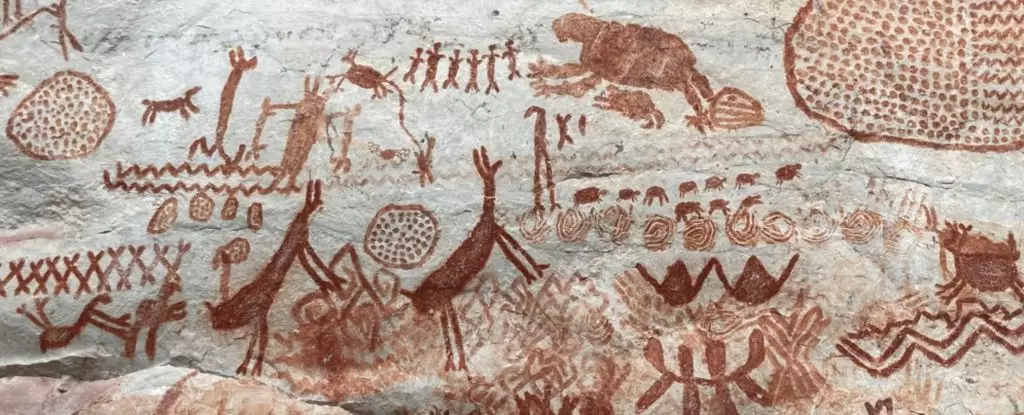The stunning rock art found in Serranía De La Lindosa, Colombia, serves as a profound testament to the complex belief systems and cosmological views of the Indigenous peoples of the Amazon. This wealth of imagery, painstakingly documented through collaboration between Indigenous elders and international researchers, paints a vivid picture of a world that transcends the material and enters the spiritual. These artworks not only capture a visual history but also reveal a deep-seated relationship between the land, its inhabitants, and the mystical elements that are integral to their existence.
For nearly a century, various barriers including political unrest and difficult terrain hindered access to these ancient sites. Yet, recent research efforts have illuminated key aspects of Indigenous rock art, unraveling secrets that have remained obscured for generations. Archaeologist Jamie Hampson from the University of Exeter underscores the rarity and significance of this discovery, reflecting on his extensive experience working alongside Indigenous groups globally. Unlike many previous investigations, the collaboration with the Indigenous community in Serranía De La Lindosa has allowed for a unique alignment of oral traditions with the artistic expressions observed in the rock motifs.
Art as a Portal to the Spirit World
The motifs painted with ochre depict a rich natural environment, showcasing human figures intermingled with animals, plants, and intricate geometric patterns. However, these images represent more than mere documentation of the physical world. They serve as narratives of ritual encounters and negotiations with the spirit realms, as emphasized by elders like Ismael Sierra. These artists did not just capture the tangible; they sought to bridge the realms of the living and the spiritual. Graphic illustrations of transformation—where humans morph into animals, or vice versa—highlight a world where boundaries are fluid and nature and the supernatural coexist harmoniously.
Understanding these motifs requires insight into the cultural fabric of the Amazon’s Indigenous inhabitants, particularly their ties to forest spirits believed to govern wildlife. These spirits are not only protectors of nature but also essential to the success of various hunting expeditions. The process of painting an animal onto a rock wall with red pigment becomes more than an artistic endeavor; it transforms into a ritualistic plea for success, sacrifice, and fertility. The jaguar, for instance, is not merely an animal here; it symbolizes the shaman’s path and serves as a mediator between the different realms of existence: life and death, humanity and the ancestral spirits.
The collaboration between researchers and Indigenous elders enriches our understanding of these artworks, removing the Western outsider’s interpretive lens and placing cultural significance at the forefront. This multifaceted approach recognizes that rock art is not just a relic of history, but a living expression of belief systems and cultural identity. Hampson articulates the importance of this perspective, which emphasizes the sacred nature of these artworks and their creation in places imbued with spiritual meaning.
Facing a Fragile Future
Despite the revelations and significance of this art, there remains pressing concern for its preservation. The displacement of Indigenous communities due to various pressures raises questions about who will safeguard these sacred sites. Elder Ismael Sierra voices a poignant worry for the future: “Who is going to maintain these paintings?” This concern extends beyond the physical preservation of rocks adorned with ancient imagery; it speaks to the broader issues of cultural survival and the reinforcement of Indigenous identities in the face of historical erasure and ongoing challenges.
The art of Serranía De La Lindosa is more than mere decoration on rock surfaces; it is a critical repository of knowledge, beliefs, and histories that deserve respect, understanding, and protection. By embracing a collaborative approach that values Indigenous voices, we not only enrich our anthropological understanding but also support the efforts of Indigenous descendants to reclaim their heritage. The call to action is clear: we must prioritize the preservation of these sites, ensuring that the stories etched into the rock continue to echo through time, safeguarding the connection between the land and its people for future generations.


Leave a Reply